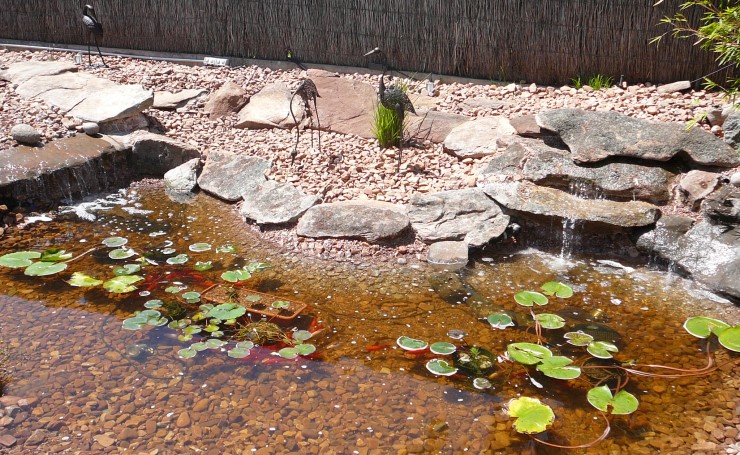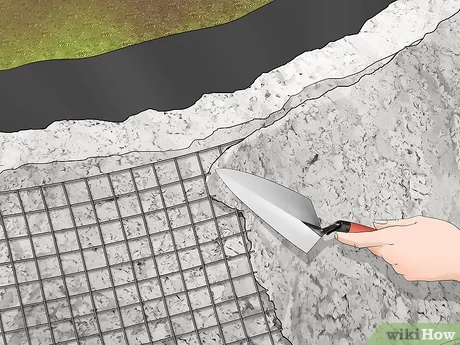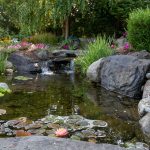Building a small concrete pond can be a rewarding and enjoyable project for any homeowner looking to enhance their outdoor space. Not only does a concrete pond add beauty and tranquility to your garden, but it also provides a habitat for aquatic plants and fish. In this guide, we will walk you through the steps to build your very own small concrete pond.
Step 1: Planning and Design
Before you start digging or pouring concrete, it’s important to carefully plan and design your pond. Consider the size and shape of the pond, as well as its location in your garden. Make sure to choose a spot that receives the right amount of sunlight and shade for the plants and fish you plan to include.
Create a detailed blueprint of your pond, including dimensions, depths, and any additional features such as waterfalls or fountains. This will help you visualize the final result and ensure that your pond meets your expectations.
Step 2: Excavation
Once you have your design in place, it’s time to start digging. Use a shovel or an excavator to carefully excavate the area where your pond will be located. Make sure to create a level base and smooth out any rough edges or bumps in the soil.
Remember to dig the pond to the desired depth, keeping in mind the needs of the aquatic plants and fish that will inhabit it. It’s also important to create shelves or ledges around the edges of the pond to provide different levels for plants and wildlife.
Step 3: Installing a Pond Liner
After the excavation is complete, it’s time to install a pond liner to prevent water from seeping into the surrounding soil. While some pond builders opt for flexible liners such as EPDM or PVC, others prefer the durability and longevity of a concrete pond.
When using a concrete pond, it’s essential to apply a layer of mortar or sealant to the excavated area before pouring the concrete. This will help create a watertight seal and ensure that your pond retains water effectively.

Credit: www.visuallandscapingadelaide.com.au
Step 4: Pouring Concrete
With the pond liner in place, it’s time to pour the concrete. Mix the concrete according to the manufacturer’s instructions, ensuring that it has the right consistency for pouring. Start pouring the concrete into the excavated area, making sure to spread it evenly and smooth out any bumps or air pockets.
Use a trowel or a float to level the concrete and create a smooth finish. Consider adding color or texture to the concrete to enhance the aesthetic appeal of your pond. Allow the concrete to cure for the recommended time before moving on to the next step.
Step 5: Adding Water and Finishing Touches
Once the concrete has cured, it’s time to fill your pond with water. Use a garden hose or a pump to slowly fill the pond, taking care not to disturb the concrete or liner. Monitor the water level to ensure that it reaches the desired depth.
After filling the pond, you can start adding aquatic plants, fish, and other decorations to bring your pond to life. Consider installing a filtration system to keep the water clean and healthy for your plants and fish. You can also add rocks, pebbles, or aquatic features to enhance the natural beauty of your pond.
Step 6: Maintenance and Care
Once your concrete pond is complete, it’s important to maintain it properly to ensure its longevity and beauty. Regularly check the water quality and pH levels to keep your plants and fish healthy. Remove any debris or fallen leaves from the pond to prevent clogging and algae growth.
During the winter months, consider installing a pond heater or aerator to prevent the water from freezing and harming your aquatic life. Inspect the concrete for any cracks or damage, and repair them promptly to prevent leaks and water loss.

Credit: www.wikihow.com
Conclusion
Building a small concrete pond is a great way to add a touch of nature and serenity to your outdoor space. By following these steps and taking proper care of your pond, you can create a beautiful and sustainable habitat for aquatic life while enhancing the beauty of your garden.
Remember to plan carefully, use quality materials, and stay consistent with maintenance to enjoy your small concrete pond for years to come.




